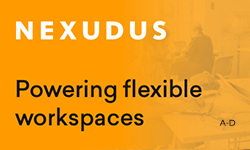The design strikes back
Since 1950, the Modernist model and functional city went into question. For the first time, architects and designers started to look inside the buildings and consider the layout of the workspace as a factor of productivity.
Until then, sitting comfortably was still synonymous with laziness. In addition, chairs represented status in the company, so for decades, executives and employees, as well as men and women had different chairs. This is the Staffel chair, designed by orthopedic surgeon F. Staffel, which was then used in most offices and even in some power plants.
It was only in the 70s that designers started to become really interested in ergonomics. Henry Dreyfuss and Niels published the "Human Scale" and "Measure of a Man", two respective texts on ergonomics that came to the attention of designers. "Human Scale" incorporates the latest scientific research in many fields of medicine and psychology. Architects were inspired by the work, as were doctors, sociologists, and anthropologists such as Lévi-Strauss. Thus, the theory of organizations to build work environments began to focus on the needs of the workers.
The era of collaboration and openness
During the 60s, the service economy exploded along with the development of the computer business, ultimately changing the image of work. Spaces that were once strictly hierarchical and rigid could now prove to be motivating for employees. The company Herman Miller set up the "Action Office Series 1", which included the first offices consisting of panels. This was the first step towards the creation of a work environment that aimed to foster interaction amongst employees.
In 1968, Robert Probst designed the "cubical", still widespread in the United States, which was followed by the now famous open space. The latter has its origin in the "office landscape", imagined 20 years ago by brothers Eberhard and Wolfgang Schnelle. They had a very different view of the current open space, which is now more human, artistic and often includes plants.
The open space that increases the size of the area with a very small investment then emerged to foster collaboration and project work. The only downside: its uniformity, and its lack of personality. Finally, management "egalitarian" turned out to be an incredible source of stress for employees.
In 1974, Herman Hertzberger created the Centraal Beheer insurance company, a space conceived as a "village worker" designed so that the occupants ‘would have the feeling of being part of a working community without being lost in the crowd’. The space was deliberately flexible and consisted of small workspaces, like the islands forming virtually to connect to one another. These structured platforms were built repeatedly throughout the space and can accommodate groups of ten people, who were encouraged to decorate their workspace themselves, including adding their own furniture.
The creative industry: sofas in the office
The explosion of ICT and the amount of information that has emerged from the creative industry in Silicon Valley has resulted in a new generation of workers changing the world, due to such inspiring workspaces. Since the year 2000, the push to create, innovate, and find the "next big thing" became the obsession of IT companies.
To foster creativity and collaboration, office design trends are typically pleasant and informal, such as a simple "desk", where you can simply put your laptop. It’s an unthinkable concept for the older generations, that there are now sofas, ottomans, trees and even baskets of sneakers integrated into some workspaces. When we enter coworking spaces, we can now understand that our work environment has become much more "human".
Areas prioritized in the open-plan space, moved towards favoring more informal spaces as meeting rooms. Designers want, above all, to promote interaction, and to see serendipity. While Taylor rationalized, Google now measures the tail of the coffee machine to maximize interactions between their employees.
While we still have little adaptive buildings representing the prestige of corporations, communities of entrepreneurs now banish the wage hierarchy and appropriate their own coworking spaces. Subsequently, you follow it or you do it, because the coworking is already on its way to building it.
Références
[FR] Le bureau est mort, vive le bureau!
[EN] The origine of the office
[EN] History of Ergonomy
[EN] History of the Chair
[EN] How the office became what it is today
[FR] Une analyse du Centraal Beheer building
[FR] Office Museum photos






